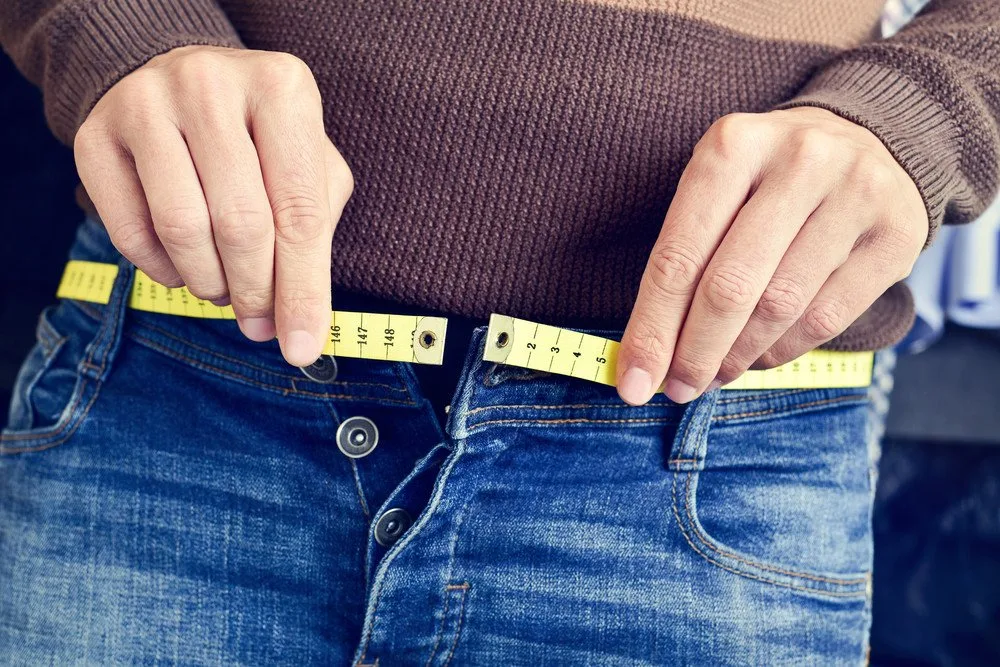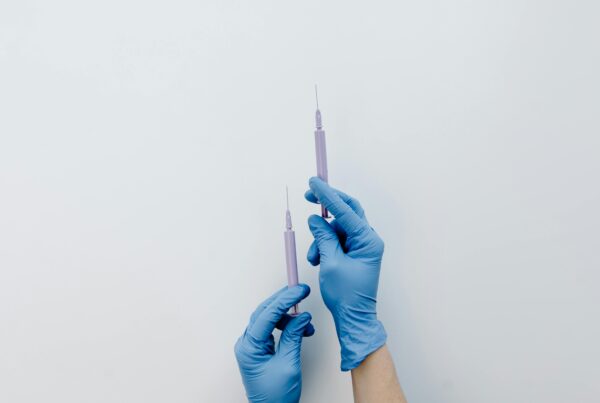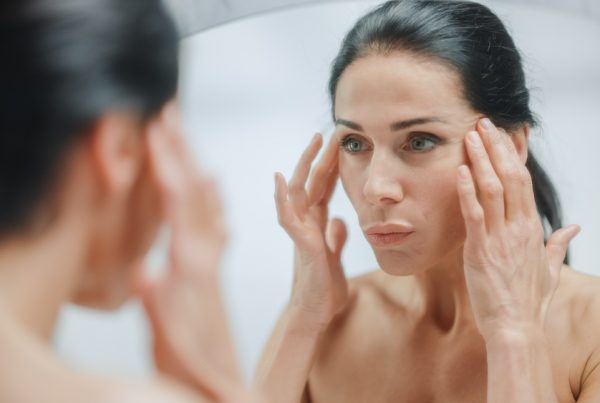Sometimes we tend to become laisezz-faire with our skincare routines, especially during the holiday season. With that said, I’m going to share my expertise on how to level up your summer skincare routine these holidays.
Skincare Holiday Advice From A Dermatologist
What are the golden rules when it comes to sunscreen?
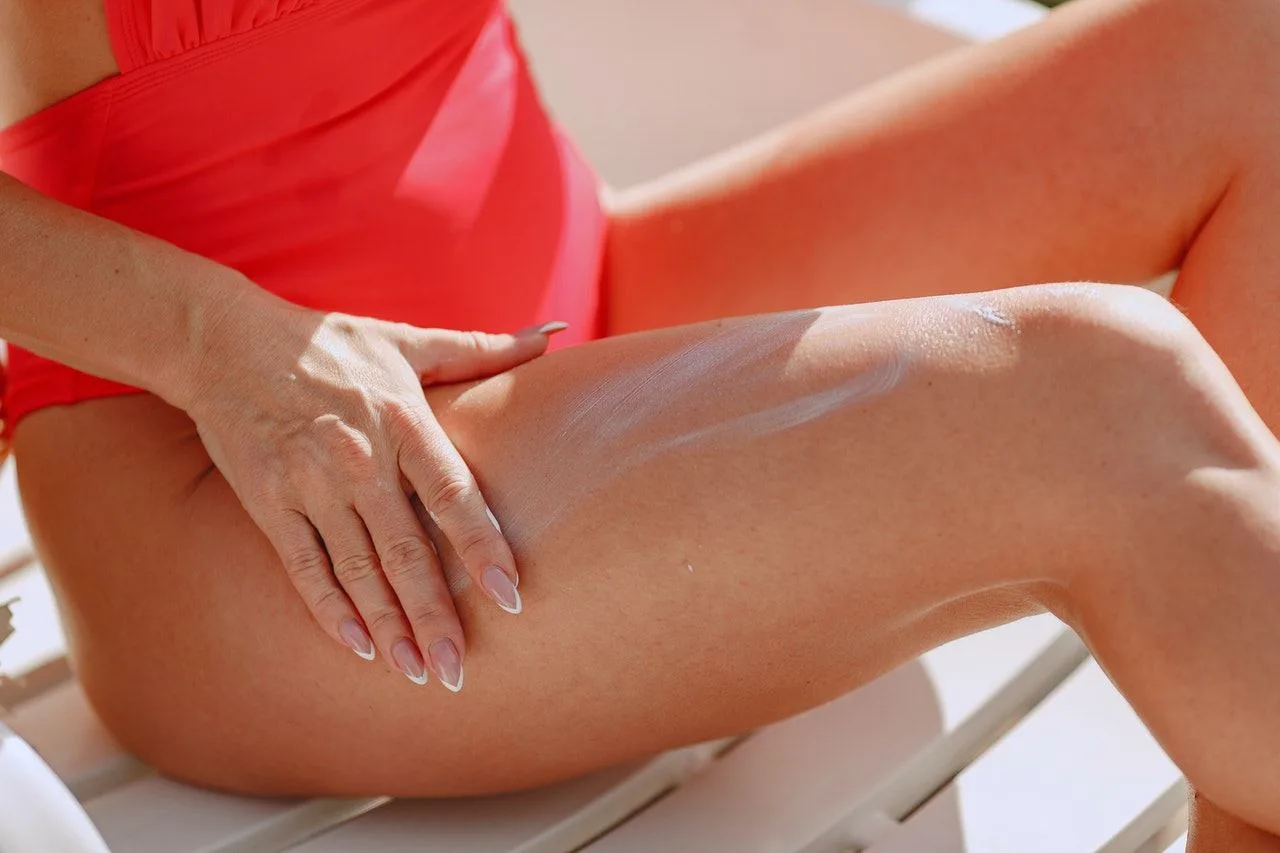
Photo by Gustavo Fring from Pexels
The simplest rule when it comes to sunscreen is to find one that you like with an SPF of 30 or higher (I prefer my patients to use SPF50) and with broad-spectrum UVA protection, apply it in adequate quantities and reapply it 2-4 hourly – all-year-round! It’s as simple as that!
Now for the detail-oriented:
Why do I prefer SPF50? Well, SPF is a numbers game. The SPF (Sun Protection Factor) of sunscreen is telling you how well your sunscreen protects you from UVB rays only – the rays which cause sunburn. If your skin would normally burn after 10 minutes in the sun, applying an SPF 30 sunscreen will allow you to stay in the sun without burning for approximately 300 minutes (so 30 times longer). The problem comes as clinical trials to establish a sunscreen’s SPF uses an improbable amount of 2 mg/cm2.
What does this mean?
You need to be applying ½ -1 teaspoon (or 3 finger lengths) of sunscreen to your face and neck and 6-7 teaspoons (an entire palm or a shot glass) of sunscreen to an adult body! That’s a LOT of sunscreen.
This means applying two tablespoons or a shot glass of sunscreen to exposed parts of the body every time you’re enjoying some sunshine. Let’s be honest: Who does that? A big 200ml tube of sunscreen would only last around 7 applications only. That’s a LOT of sunscreen.
Because people do not apply the improbable 2g/cm2 amount, your SPF30 is not really giving you the protection you think it is. In fact, if you apply only half the recommended amount of sunscreen, you don’t get half the protection. You get the square root of the SPF. So half the application for SPF 30 isn’t SPF 15, it’s SPF 5. So going for an SPF 50 is safer because essentially we are not putting on enough sunscreen.
A tip
When applying sunscreen, apply it TWICE. Sunscreen application is a bit like painting – your first coat is going to look a bit patchy, so it’s worth applying a second coat for better coverage.
Look for good UVA protection
There is no point protecting yourself from UVB “sunburn” rays but allowing the equally damaging UVA rays through.
In South Africa, the CANSA endorsement means that the sunscreen complies with the European Colipa standards: the international gold standard for UV testing. You can rest assured that we have good UVA coverage with our SA CANSA-endorsed sunscreens.
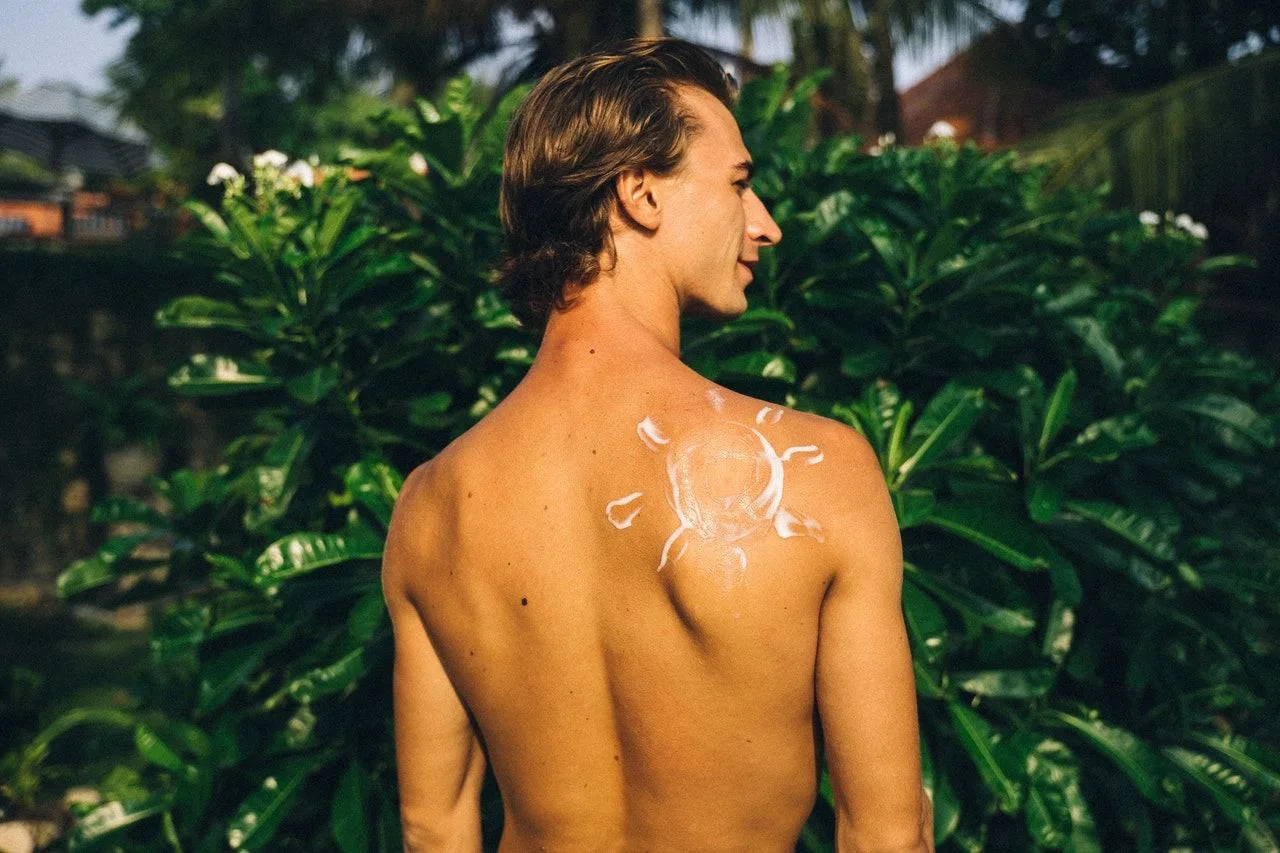
Photo by Anna Tarazevich from Pexels
Note
As a generalization, products from the EU are subjected to stricter regulations when it comes to both SPF testing and ingredient safety than in the US. A study found that US sunscreens allowed an average of 3 x the UVA rays to pass through the skin, as compared to those sold in Europe. So be wary of the US “Broad Spectrum” claims.
Timing is important when it comes to sunscreen. This is true on two fronts:
When to apply sunscreen in your daily skincare regimen. A chemical sunscreen must be applied under your daily moisturizer to allow for it to penetrate the skin effectively. A physical sunscreen (ones with zinc oxide or titanium dioxide) must be applied last so that it sits as a shield on the skin.
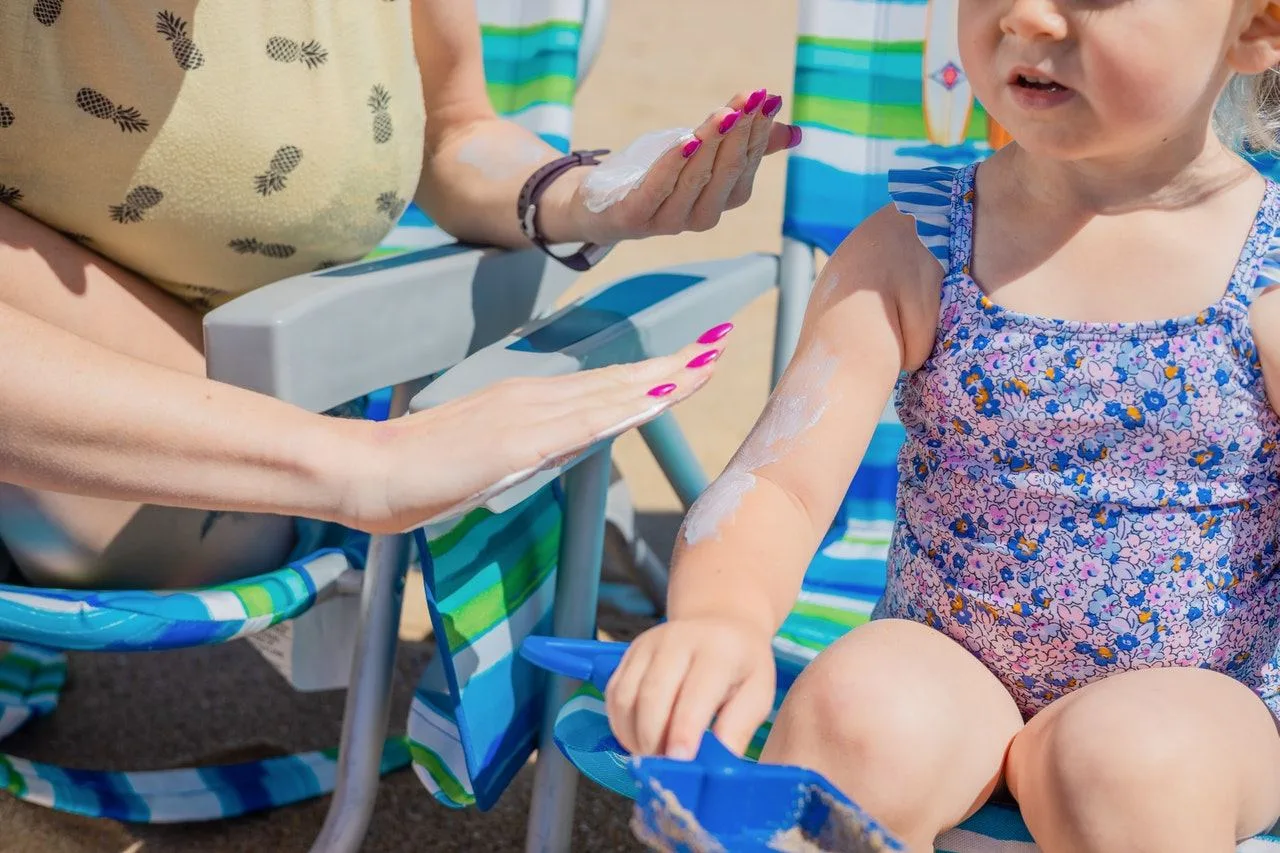
Photo by Kindel Media from Pexels
How long before I go outside must I apply my sunscreen?
A chemical sunscreen needs to be applied 20 minutes before sun exposure, and you need to wait at least 10 minutes before getting dressed to allow it to dry and penetrate into the skin.
This is because when you apply sunscreen to your skin, some of the product evaporates, leaving a thin layer of UV filters on the skin. Think of it like wet paint which needs to dry.
This process takes around 20 minutes and if you rub your skin or put on clothes, the process will be disrupted. The good news for the impulsive and impatient (or simply practical): with physical sunscreens it’s a straightforward matter of slapping it on, giving it a few minutes to ‘settle’ on the skin, and you’re good to go.
Sunscreen is an everyday, 365 days of the year habit
It is the single most important step in your skincare regimen at any age. If you are not going to protect the skin from the damaging effects of UV light, then you are wasting money on the rest of your skincare regimen.
Remember that even if you are not going to the beach, everyone gets incidental UV exposure: when driving, sitting outside at a restaurant, or when popping into the shops…Even when it is cloudy, up to 80% of the sun’s rays will hit your skin. Even when sitting inside, cancer-causing UVA rays penetrate through windows and damage your skin.
Add to that: blue light from computers and cell phones can also contribute to pigmentation and wrinkles (yes, our Netflix bingeing, Zoom calls, and Face-timing are aging us!). Skin care starts ALWAYS with religious SPF use.
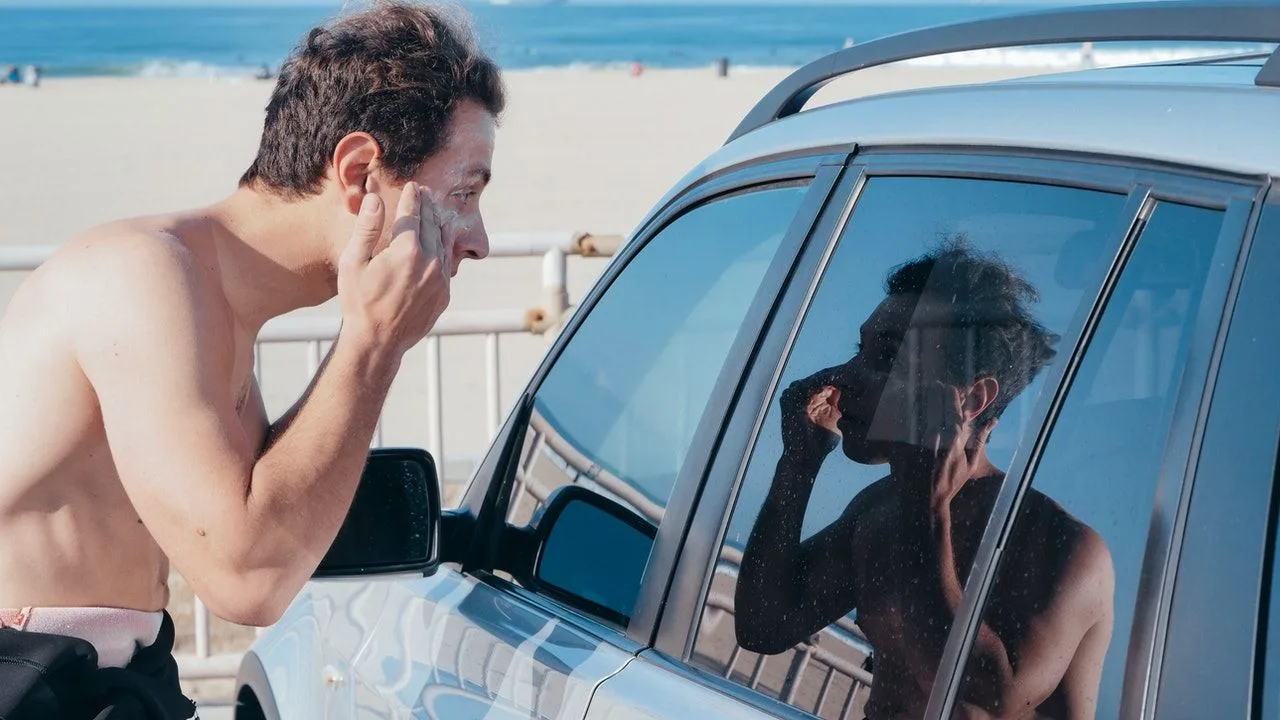
Photo by Kindel Media from Pexels
Water resistance
Choose a water-resistant sunscreen during summer if you are going to be exercising, sweating, or swimming: and remember that ‘water-resistant’ means that it protects you in water for only 40 minutes: longer than this and you need to reapply your sunscreen.
A ‘very water-resistant’ sunscreen offers protection for 80 minutes. But if you are wiping your face or towel-drying, you always need to reapply. Another tip is to look for an eye-friendly formula that won’t burn the eyes if you’re sweating or getting wet.
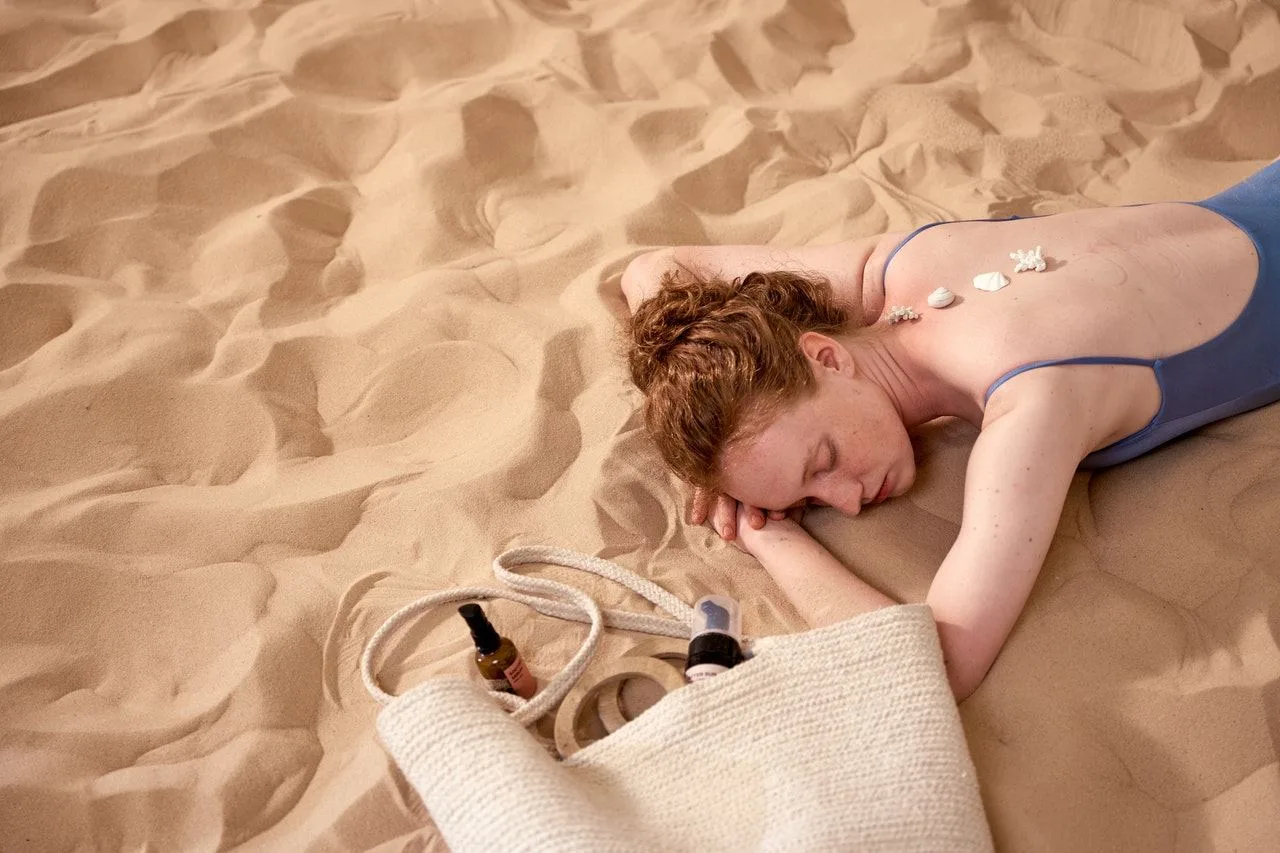
Reapply 2-4 hourly
Sunscreen (chemical sunscreens more than physical or mineral sunscreens) degrades with UV exposure (it gets used up like petrol each time it gets hit by a photon of UV light), so you need to reapply it every four hours if you’re indoors and every two hours if you’re outdoors.
First-prize
Look for a mineral sunscreen: Physical (or mineral) sunscreens contain zinc oxide or titanium dioxide as their active ingredients + have a rock-solid safety profile. If you don’t want your sunscreen absorbed into your body, where it can act as an endocrine disruptor (confusing your body into thinking it is estrogen – oxybenzone is the black sheep here), rather reach for a physical sunscreen.
Bonus
Physical sunscreens don’t degrade over time to the same extent that chemical filters do, and provide better broad-spectrum UVB + UVA protection as well as protection against visible light. Chemical filters on the other hand require multiple filters in the formulation to cover the full UV spectrum, meaning more chance of reactions. This is why physical sunscreens are 100% my first choice for sensitive skin types, during pregnancy, and for children.
REMEMBER
How do we best combine our makeup routine with sun protection?
The first and most important rule is to always use a dedicated sunscreen.
While many beauty products nowadays have added SPF, generally make-up/ tinted moisturizers or BB creams contain an SPF 15-25 and is not applied in adequate quantities to provide the sun protection advertised on the bottle. You would need to layer so much product on the skin that you would look like you were going to some sort of Mardi Gras festival.
To properly protect against the sun, a stand-alone sunscreen with broad-spectrum UVB and UVA coverage and an SPF of 30 or higher should be applied. You can consider your foundation and other beauty products with an SPF as extra insurance.
Glowing skin
Alternatively, embrace radiant, glowing skin and stick to tinted sunscreen rather than make-up over summer. They kill two birds with one stone: you get the non-negotiable protection that you need, PLUS you get an enviable even complexion and glow.
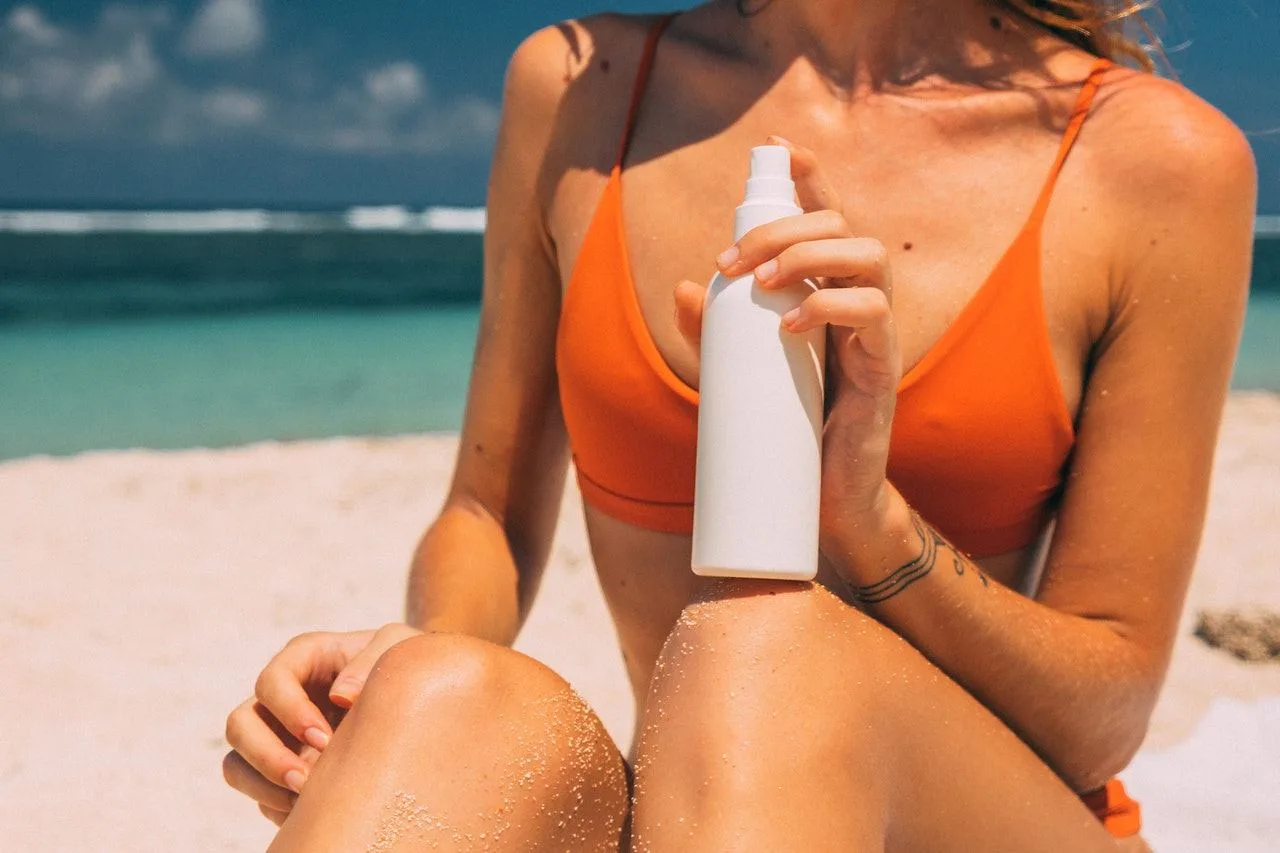
Photo by Mikhail Nilov from Pexels
As a bonus, most contain iron oxides, which provide superior protection against pigmentation-inducing blue light from our devices.
For a minimalistic no-make-up make-up look – this is the way to go! Your skin will thank you for it!
Another pro-tip
Use compact SPFs which reapply similarly to a foundation, stick SPFs or powder SPFs for easy top-ups throughout the day which do not mess with your make-up.
Expert’s note
- Clean your applicator sponge to prevent bugs breeding on it
- You will need around 4-5 thin layers of powder to reach an adequate SPF: just let each layer settle in between
- Apply powders in a well-ventilated area to avoid breathing particles into your lungs
Recommended products
- SkinCeuticals Physical Fusion UV Defense SPF50
- Colorscience Sunforgettable Total Protection Brush-on shield SPF50
- Heliocare mineral tinted compact SPF50
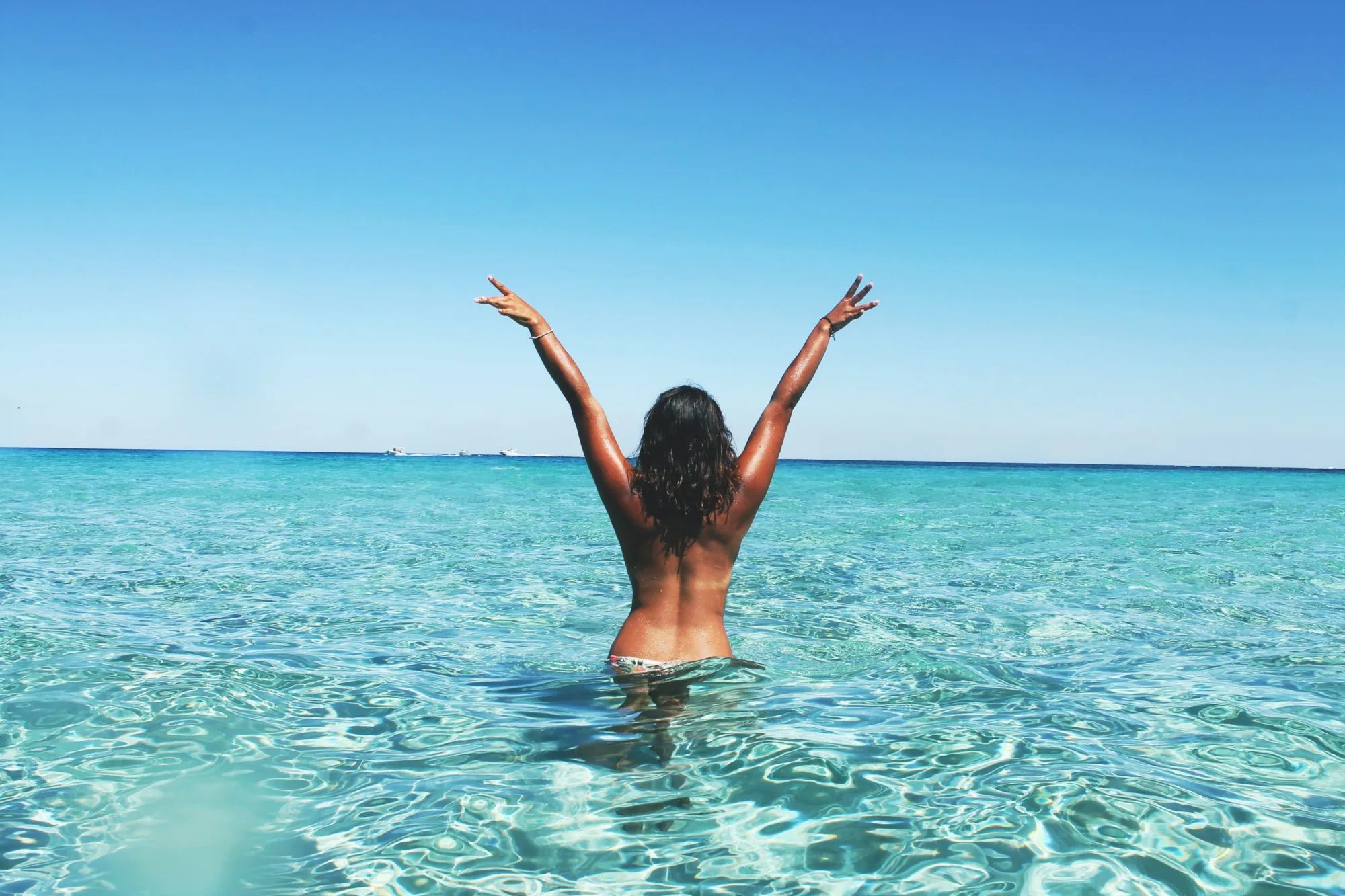
How should we switch up our skincare routine when spending lots of time in pools or the ocean?
The problem with spending time in chlorinated pools is the impact on our skin barrier.
If you’re a patient of mine, you’ve for sure heard me harping on about the importance of protecting and restoring your skin’s barrier because when it comes to skin, barrier is EVERYTHING!
It is what makes the difference between healthy, comfortable skin and eczema, infections, inflammation, and dehydration. Essentially, it keeps the bad stuff like bacteria and pollution from getting IN, while stopping the good stuff, like moisture, from escaping OUT into the atmosphere. There is even an ominous-sounding name for this process: transepidermal water loss (TEWL).
A quick explanation around what makes up our skin barrier
Simply put, the skin barrier is a little coat of armor that surrounds the skin to protect it from the outside world. In Covid-terms, you can think of it as our front-line. Our skin barrier is made up of epidermis and, most specifically, the specialized, outermost layer of the stratum corneum. It is a layer of actively shedding fully differentiated ‘dead’ skin cells, which are fortified with a latticework of remaining cell-to-cell connections and a complex lipid matrix that fills the gaps between the cells and limits water loss from the skin.
The combination in the summertime of sun, chlorine, air-conditioning, and other external environmental insults such as pollution, etc. set the scene for irritation and inflammation. A skin with a compromised barrier is not a happy one or a youthful one. It becomes dull, dry, flaky, red, itchy, sensitive – and older-looking.
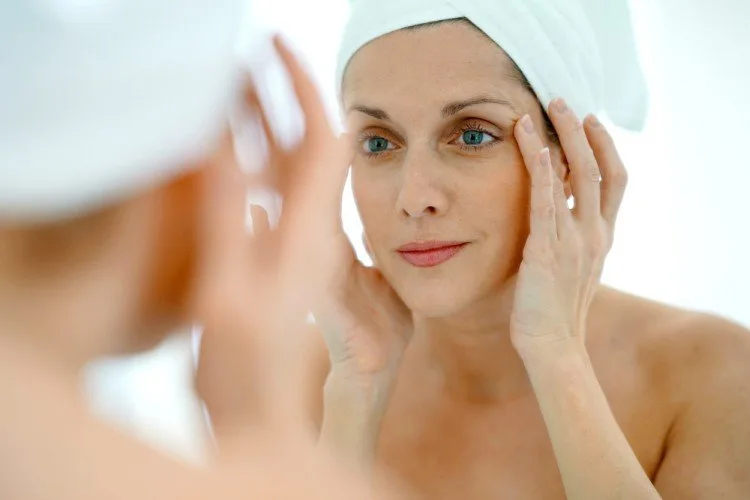
goodluz/shutterstock
The Solution
You want to modify potential irritants by protecting the skin and replenishing its moisture levels using ingredients providing deep day-long hydration: A pro-derm tip is to use a barrier cream as part of your morning routine to form an occlusive layer that seals in moisture and which ‘water-proofs’ the skin. You would then apply a mineral sunscreen over this barrier cream (and a chemical sunscreen below the barrier cream).
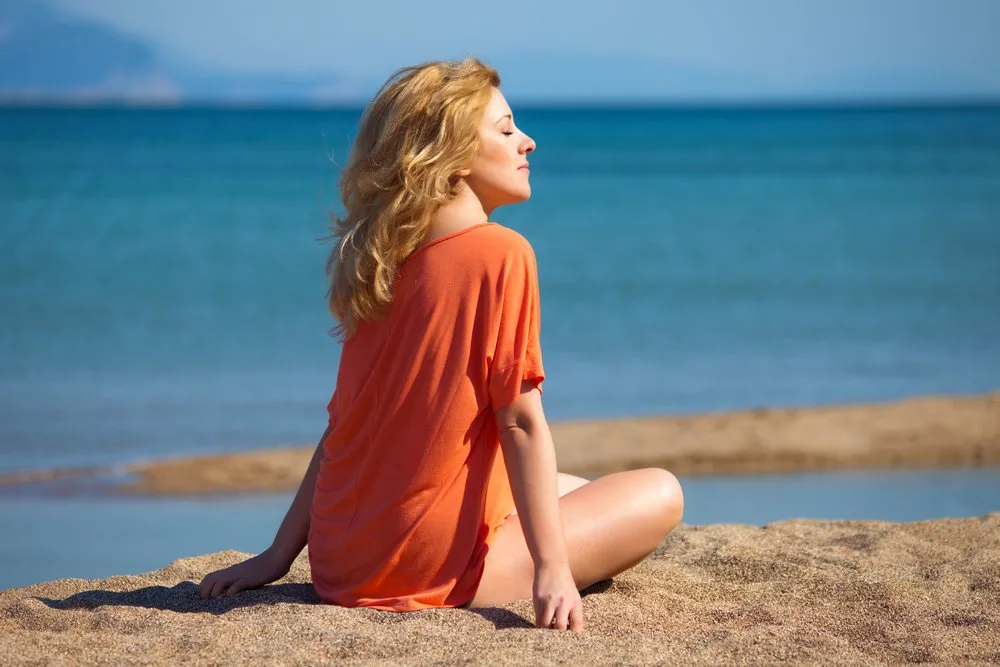
Nighttime routine for skin barrier
At night, feed your skin what it has lost during the day: really smother your skin with skin-barrier-loving ingredients and antioxidants to replenish the moisture lost during the day and to repair any oxidative skin damage.
I love to layer skincare with a humectant to draw water into the skin (e.g. hyaluronic acid or glycerin) followed by a sophisticated moisturizer which is both an emollient and an occlusive rich in skin identicals such as ceramides, fatty acids, and cholesterol to restore the skin barrier. Hyaluronic acid is a great summer-time skincare hack since it draws water into the skin without weighing it down. Always apply to damp skin and be sure to follow with a moisturizer.
Recommended products: root4 Complete Serum and root4 Face Crème Originale
What’s the most underrated skincare step during the holidays?
I have a way of explaining skincare to patients which I’ve called my root4 DR L protocol: it’s a simple way of explaining skincare – you need to DEFEND, then RENEW, and then LIBERATE the skin.
The DEFEND principle is a year-round principle, but it’s ramped up in summer. Across all skin phenotypes, the two most important products will be SPF and antioxidants (think resveratrol, vitamin C, E, ferulic acid, green tea, pomegranate seed oil, etc.)
During summer – it is so important to up the ante with antioxidants: they are a key component of a holiday skincare routine when we are exposed to much more free radical damage. Antioxidants help to boost your SPF, protect the skin from environmental damage, and help to repair that damage.
Another key summer skincare step is cleansing
A good cleanser is so important in summer – apart from needing to clean away the dirt and sweat from the skin, it takes more than one cleanse to dissolve away the greasy sunscreens. Look for a cleanser that doesn’t have harsh surfactants (like SLS, SLES) which can’t distinguish dirt and sebum from our much-needed fatty acids and lipids in our skin and which strips our skin barrier.
Double cleanse at night
If your cleanser is worth its salt, then just cleanse twice with that! But if you put water on your skin after the two cleanses, and you can still see that it forms little droplets, it means that there is still oil on the skin, and it hasn’t done a good enough job.
Recommended product: root4 Complete Serum and root4 Cleansing Elixir
How does our diet impact our skin?

The silly season means overindulging in collagen-degrading sugary treats and high glycaemic index, inflammatory foods, and alcohol.
Sugar sets off a process known as glycation where sugars attach to proteins and form advanced glycation end products or AGEs – a clue for what it’s doing in the skin!
These molecules naturally build up in the skin as we get older, but the more sugar you eat, the more AGEs you have. Bad news: they cross-link with collagen and elastin fibres making them weak and inflexible. The skin doesn’t bounce back easily and this leads to wrinkles and sagging. This is why it is called: the Sugar Sag!
Healthy holiday eating for skin
Allow yourself to indulge, but counteract the damage by focusing on antioxidant-rich foods, Vitamin C-rich foods, and foods rich in glutathione – like onions, blueberries, green tea, dark chocolate, cinnamon – all of which boost your antioxidant levels. Cultivate a healthy gut microbiome by eating fibre-rich foods that contain prebiotics and fermented foods that contain probiotics.
Holiday drinking
If you’re sipping on more cocktails, remember that alcohol is dehydrating, which makes your skin more sensitized and irritated, so drink a glass of water between every alcoholic beverage, replace your electrolytes and support your liver with supplements such as milk thistle.

H_Ko/Shutterstock
Choose alcohol with a lower sugar content (like tequila, gin, vodka) with a low-sugar mixer like soda water, as this helps to lessen your collagen fibres and elastin fibres from breaking down, which accelerates aging.
Also, support your skin by applying retinoids and peptides to the skin, which will boost collagen production and reverse the damage caused by those AGEs.
Recommended product: root4 NovA Oil
Want to know more?
It’s that time of year again when people start planning for the holidays. During the holiday season, many of us tend to gain weight. While it can be overwhelming to start making New Year’s resolutions, it can be helpful to start with a plan to manage your weight throughout the festivities.


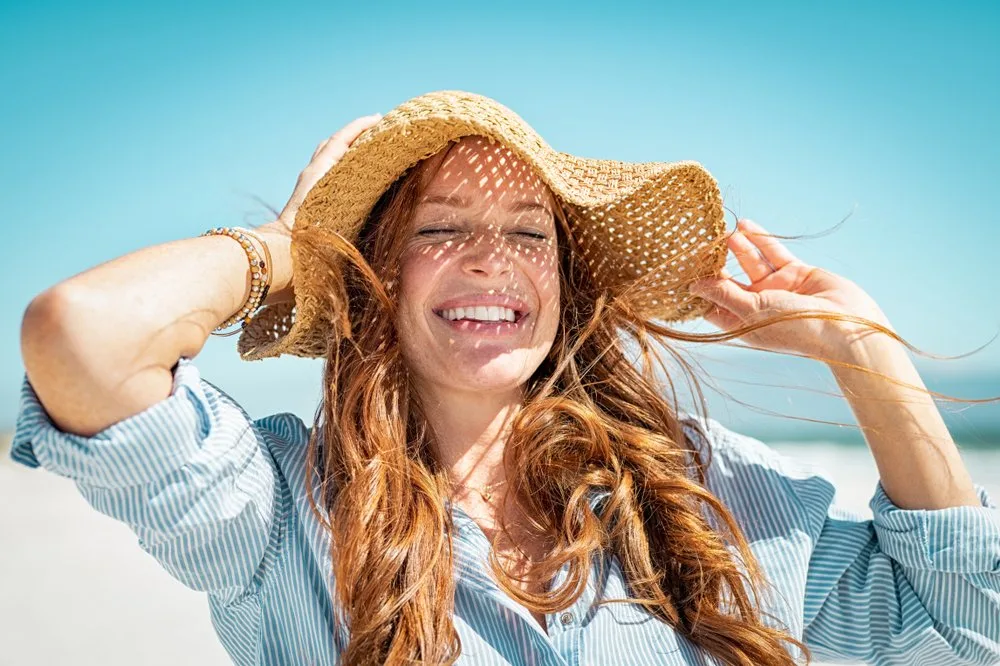
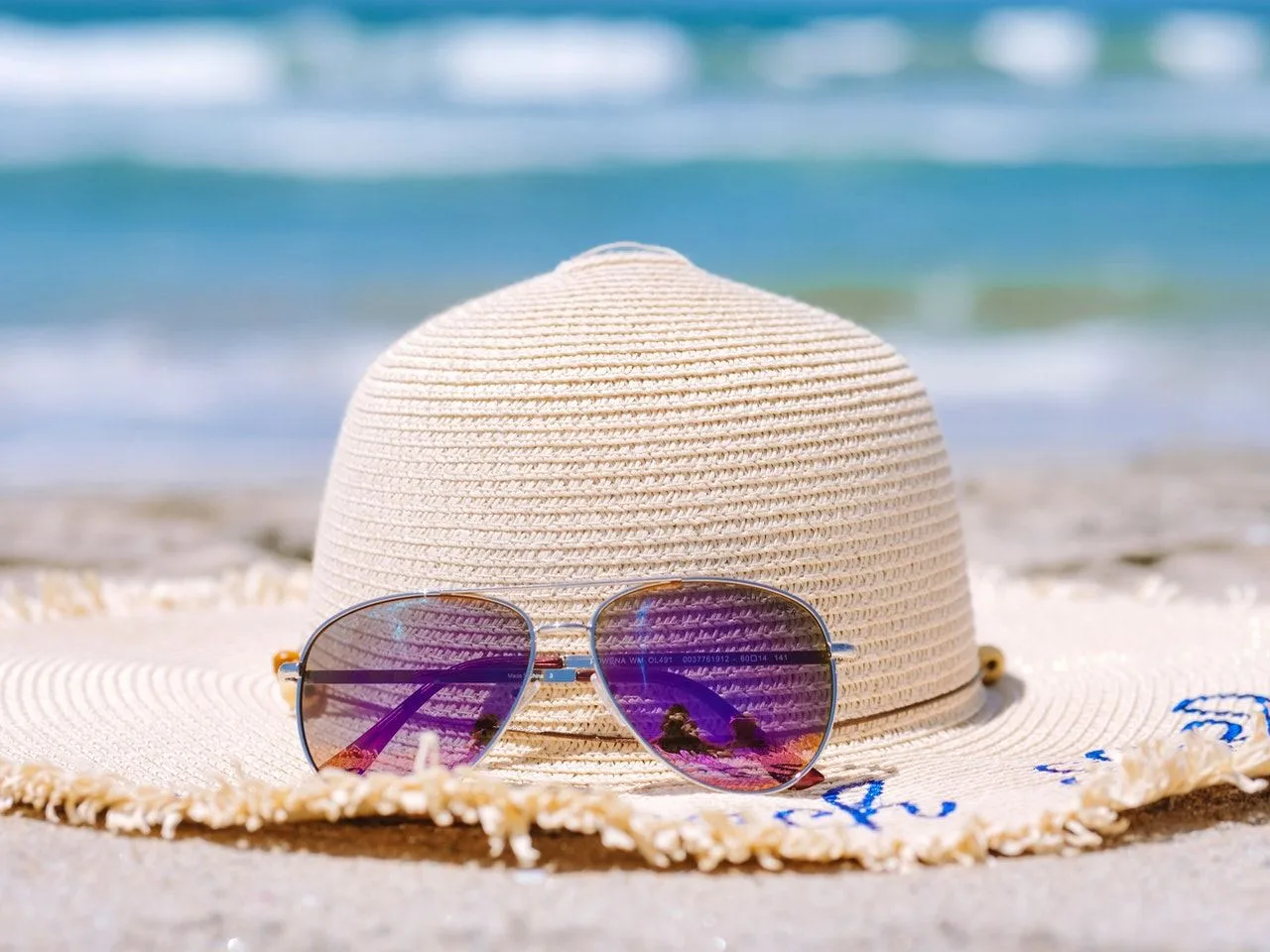
![women [longevity live]](https://longevitylive.com/wp-content/uploads/2020/01/photo-of-women-walking-down-the-street-1116984-100x100.jpg)





